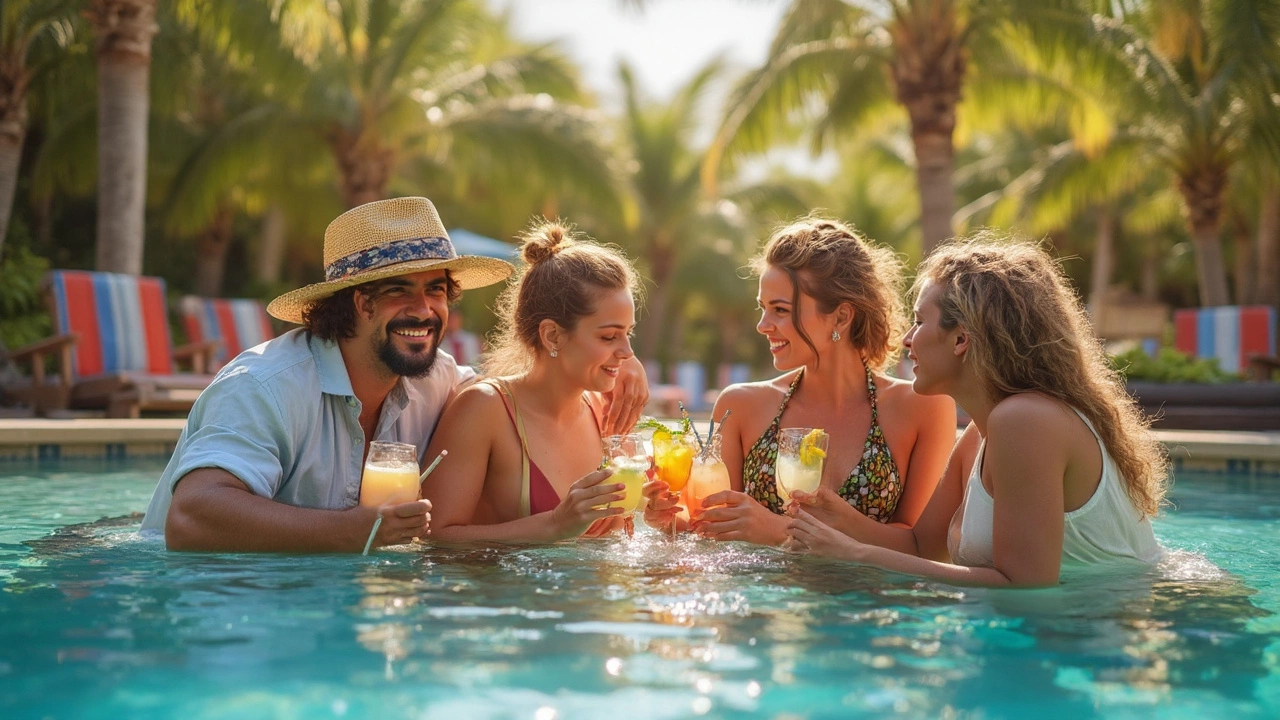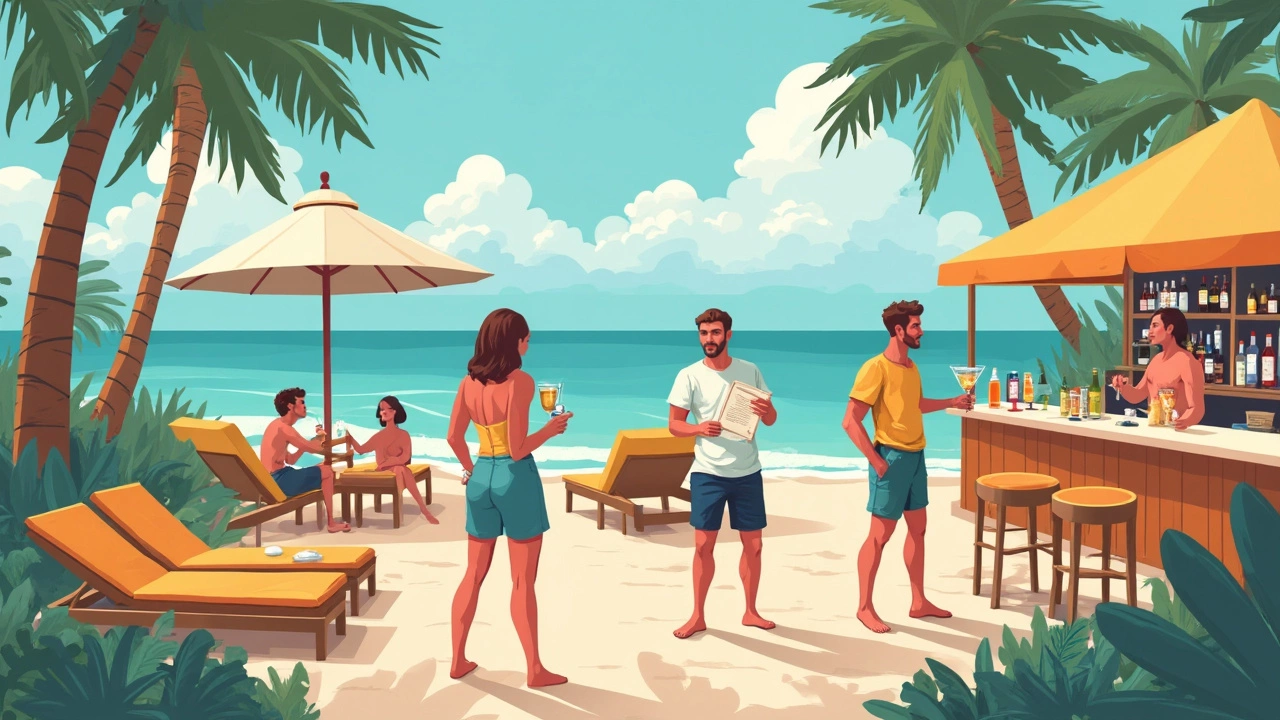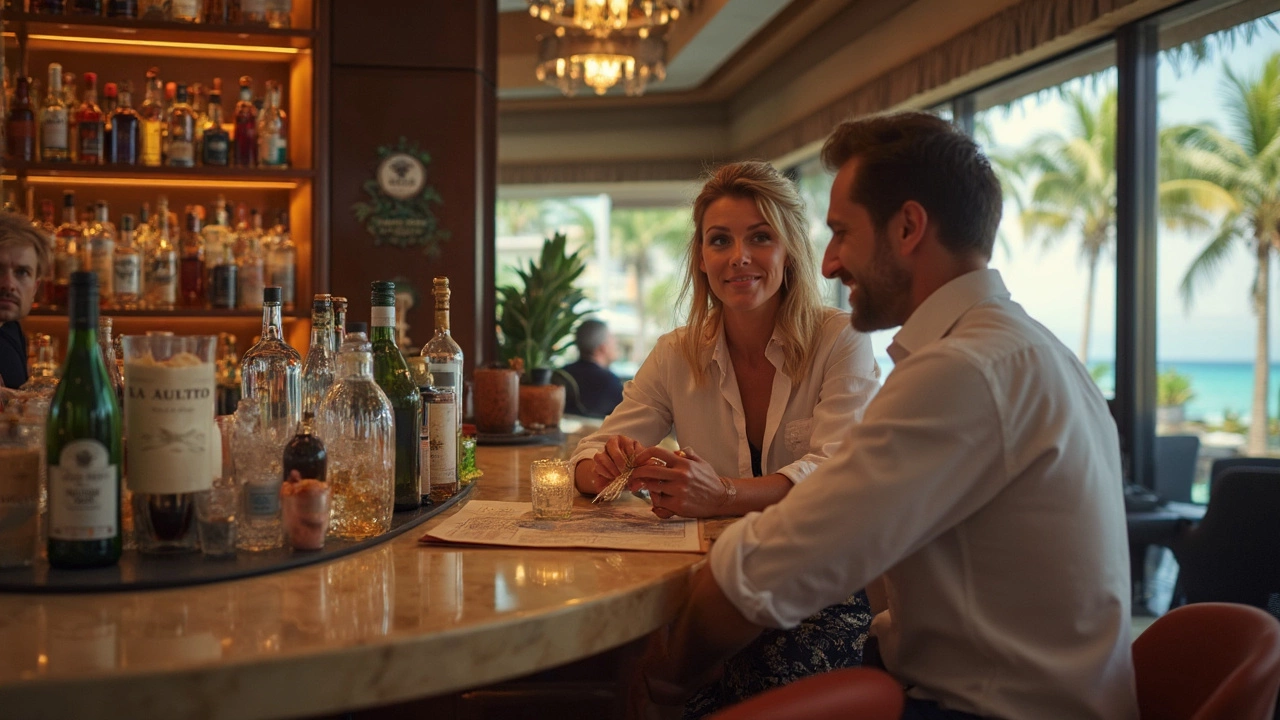So you see ‘all-inclusive’ on a hotel’s website and think, “Awesome, I’ll never need my wallet.” But does all-inclusive always mean the booze flows for free? Not exactly. The rules change depending on the brand, the country, and even the room type you book. If you’re dreaming of endless mojitos, you’d better read the fine print.
Here’s the deal: in a lot of resorts—especially in Mexico and the Caribbean—‘all-inclusive’ covers standard drinks. Think local beers, house wines, and basic cocktails. But if you’re eyeing that top-shelf whiskey or crazy Instagrammable cocktails, those might cost extra. And some ‘all-inclusives’ in places like Europe or the Middle East actually put limits on drinks per person, or only serve alcohol at certain times of day.
You want to avoid that awkward moment at the pool bar where your margarita lands you an unexpected bill. It always pays to double-check what’s really included before you book. Scroll through what the resort lists under ‘what’s included’—it’s usually tucked away somewhere below the big pool photos and perfectly staged dining shots.
- What All-Inclusive Actually Covers
- Alcohol: What’s Usually Included (and What’s Not)
- Major Chains and Their Drink Policies
- Hidden Catches and Upgrade Options
- Smart Tips to Maximize Your All-Inclusive Experience
What All-Inclusive Actually Covers
The term all-inclusive sounds like everything is covered, right? Well, it usually does mean a lot more than just food and drinks, but there’s a catch: what’s included varies between hotels and resorts.
Here’s what most all-inclusive hotels usually cover as part of their package:
- Unlimited meals and snacks at various on-site restaurants and buffets
- Beverages (both non-alcoholic and, in many cases, alcoholic)
- Basic resort activities like fitness classes, pool games, and nightly entertainment
- Non-motorized water sports such as kayaking or paddleboarding
- Use of hotel facilities like the gym, sports courts, and kids’ clubs
This table shows standard inclusions at popular all-inclusive destinations:
| Destination | Meals & Snacks | Alcohol | Activities |
|---|---|---|---|
| Mexico (Cancun, Riviera Maya) | Yes | Yes (mostly local brands) | Many, often included |
| Dominican Republic | Yes | Yes | Many, often included |
| Europe (Spain, Greece) | Yes | Sometimes limited | Fewer, extras cost more |
Big brands like Sandals or Club Med usually have pretty generous packages—they want you to put your wallet away and just relax. But not every hotel operates like that. Some cut corners, limit where you can eat or drink (maybe only at the buffet, not the fancy restaurant), or charge for extras like fancy cocktails, bottled water, or even premium coffee. Always look for exactly what’s spelled out as “included” and spot asterisks leading to sneaky fine print.
The bottom line? Never assume everything is covered. Even resorts with the same parent company might offer different perks based on location, season, or room tier. If you care about unlimited drinks or access to specialty restaurants, it pays to ask the hotel what their all-inclusive plan really means before you book. The little details can make or break your vacation vibes.
Alcohol: What’s Usually Included (and What’s Not)
Here’s the straight talk: most all-inclusive hotels throw in unlimited drinks, but what you actually get depends on the fine print. Basic package? You’ll often find local draft beers, house wines, and standard well liquor—think rum, vodka, gin, and tequila. These are usually not the fancy brands you might know from back home. Instead, expect local spirits or mid-range names at best.
If you’re craving a Johnny Walker Black or a Grey Goose martini, check first—high-end or import liquors are rarely part of the basic deal and often cost extra, either by the glass or as part of a premium upgrade. Mini-bar in the room? Sometimes it’s free and refilled daily, sometimes it’s just water and soda unless you pay more.
Cocktails are usually included, but don’t expect every bar to have a full list of specialty mixes or the freshest ingredients. If you love craft cocktails, you might want to look for resorts that advertise premium bars explicitly. Some resorts also have rules around when you can get alcohol—alcohol service might stop late at night, or breakfast mimosas might not be a thing everywhere.
- House wine, local beer, and basic mixed drinks: usually included
- Import liquors, aged spirits, specialty cocktails: often cost extra
- Mini-bar alcohol: sometimes included, sometimes not
- Room service booze: usually extra unless you booked a high-end suite
Pro tip: Check if your resort issues colored wristbands. Sometimes, guests with higher-tier bands get access to the swankier bars or name-brand drinks, while standard guests stick to more basic fare. And in countries like Spain or Turkey, new local laws sometimes limit the number of alcoholic drinks per day at all-inclusive resorts (sometimes as low as six during meal times).
| Drink Type | Typically Included | Extra Charge? |
|---|---|---|
| Local beer & wine | Yes | No |
| Basic spirits | Yes | No |
| Premium/import spirits | No | Yes |
| Mini-bar (with alcohol) | Sometimes | Sometimes |
| Specialty cocktails | Sometimes | Yes (at some resorts) |
Always scout out the hotel site or ask questions before booking if drinks are a big deal for your trip. Saves headaches, and maybe even a few bucks, once you’re poolside.

Major Chains and Their Drink Policies
Here’s where it pays to know your brands: big all-inclusive hotel chains each do things a little differently when it comes to drinks. Before you book, get familiar with how some famous names handle alcohol—because not all ‘unlimited’ drink packages are created equal.
All-inclusive resorts like Sandals, for example, make a point of bragging that premium drinks are really included: you can get top-shelf spirits, Champagne (not sparkling wine), and even stocked mini-bars at no extra cost. Their staff rarely upsell you, so what you see is what you get when it comes to drinks.
RIU Hotels tend to offer unlimited local and some international brands, but you might hit a wall if you’re chasing fancy single-malt whiskies or super-special tequilas—those are sometimes only at their “Elite Club” properties or as paid upgrades. Iberostar often includes local beers and basic cocktails but only brings out premium liquors for VIP guests or at extra charge.
Club Med keeps things pretty straightforward in most of its worldwide resorts: beer, house wines, and many cocktails are always in the price. But if you’re in Europe, be aware that in places like Spain and Greece, alcohol rules are stricter. Some governments have capped drink numbers per guest per meal, and Club Med has to follow the rules—even if you’re willing to pay more.
If you’re looking at Hyatt Ziva or Zilara, you’re in luck—these properties usually include premium international and local drinks, both at bars and in your minibar. But Dreams and Secrets resorts (both under Hyatt now) vary by location: some include better brands, some not so much, and it can switch up by season.
| Chain | Standard Drinks Included? | Premium Brands Included? | Special Notes |
|---|---|---|---|
| Sandals | Yes | Yes | Mini-bar also included |
| RIU | Yes | Sometimes (Elite Club or upgrade) | Location matters |
| Iberostar | Yes | Mostly for VIP or extra charge | Read your package details |
| Club Med | Yes (basic) | Rare, and Europe places have limits | Legal restrictions can apply |
| Hyatt Ziva/Zilara | Yes | Yes | Minibar included |
Always check the hotel’s official site for the current list of included liquors and beers. If you’re picky about your gin or need a certain tequila, ask in advance. And watch out for “ultra-premium” lists or bar menus—if the menu has prices, you’re not in the free zone anymore.
Hidden Catches and Upgrade Options
This is where that dream of unlimited everything can hit a snag. Not everything at all-inclusive hotels is truly included, and the fine print can mess with your plans if you’re not paying close attention.
One thing to watch out for is the "house brands only" catch. Many resorts offer unlimited drinks, but only for local or generic liquor. If you want anything top-shelf—like Grey Goose, Patron, or real Champagne—you’ll either pay à la carte or have to upgrade to a higher-level package. Some resorts use color-coded wristbands: the basic one means you get the lower-tier stuff, while premium bands unlock the good stuff.
Another common catch: minibar drinks. You might think you can raid the fridge anytime, but in plenty of places, only water, soda, and maybe a single beer per day are free. Refills, or even just opening another bottle, can show up as a surprise charge on your room bill.
Also, pay attention to drink limits. Especially in parts of Europe, there are hotels with strict max drinks per meal—sometimes as low as three. No one wants to argue with a bartender on vacation, so check beforehand. And sometimes alcohol is only served in restaurants or certain bars, and hours can be restricted, like no alcohol until lunch.
If you want more, most resorts offer paid upgrades. These can include:
- Premium spirits and cocktails (with brand-name booze)
- Access to exclusive lounges or bars serving higher-end options
- In-room premium minibar restocking
- VIP service including bottle service and upgraded snacks
It’s not all doom and gloom—upgrades can be worth it if you’re picky with your drinks or celebrating something big. The trick is to ask before you book. Email the front desk or check recent guest reviews where people spill the real details.
Here's a quick look at the kind of upgrade options and costs some major resorts offer:
| Resort Brand | Upgrade Perks | Typical Daily Price (per person) |
|---|---|---|
| Sandals | Full premium bar in-room, top-shelf drinks everywhere | $60-$120 |
| RIU | Access to premium brands, separate VIP lounges | $30-$70 |
| Hyatt Zilara/Ziva | Club lounge premium selection, room service drinks | $40-$90 |
Unless you’re totally fine with the basics, consider budgeting a little more for upgrades if drinks are a big part of your vacation fun.

Smart Tips to Maximize Your All-Inclusive Experience
Let’s be real, nobody wants to get less than they paid for, especially when it comes to a all-inclusive package. To squeeze every bit of value out of your stay, you need to be a little bit strategic—not cheap, just smart.
- Read the hotel’s official fact sheet before you book. The boring PDFs or web lists are where resorts hide real details about what’s included. Don’t trust glossy photo galleries or Instagram ads.
- Ask about wristbands and access. Some hotels use colored wristbands for different guest levels, and higher tiers often come with better drinks and access to premium bars.
- Look for daily activity schedules. A lot of bars run happy hours, mixology classes, or tequila tastings—the fun stuff can be free, but you need to know when and where.
- Use room service if it’s included. Mid-afternoon snacks or late-night drinks can be ordered to your room at no extra charge in many spots—but not always, so check first.
- Don’t double tip unless you want to. Tips are technically included at most all-inclusive resorts in Mexico and the Caribbean. Some folks tip for better service or stronger drinks, but it’s not mandatory.
Here’s a little-known fact: In some countries, like Spain’s Balearic Islands, there are local laws limiting alcoholic drinks in all-inclusive packages to three per person at lunch and dinner. A lot of British travelers were surprised by this rule in 2024. Always check for those details, especially in Europe.
| Region | Drink Limits | Top-Shelf Included? |
|---|---|---|
| Mexico | No Limits (at resort discretion) | Usually No |
| Caribbean | No Limits | Often at Premium Level |
| Spain (Balearics) | 3 per meal | Rarely |
| Greece | Time limits by law/common | No |
If you love top-shelf booze or signature drinks, ask on day one if there’s an affordable upgrade. Sometimes a $20 per day add-on unlocks the good stuff and fancy mini-bar setups. That can actually save you money if you like premium brands.
One experienced traveler told Travel + Leisure:
“Don’t assume you get everything in those pictures—my resort hid the best drinks and snacks behind a ‘premium’ upgrade, and no one explained it at check-in!”So never hold back your questions. The front desk staff have heard them all—just be clear about what you want and make your expectations known right away.
